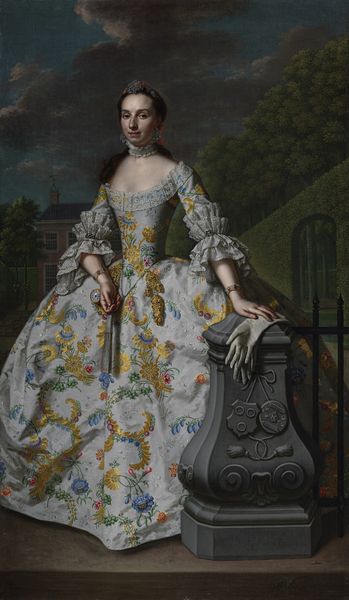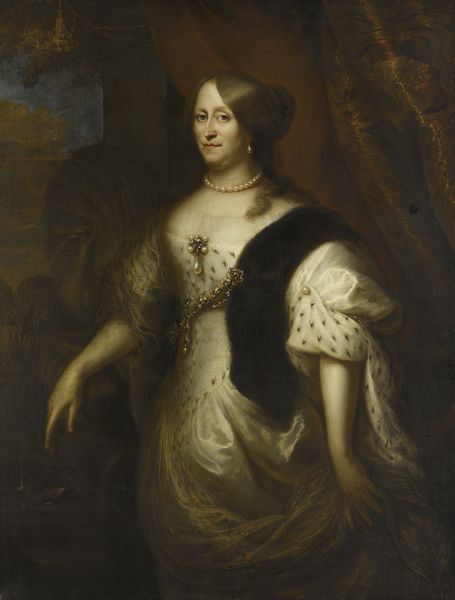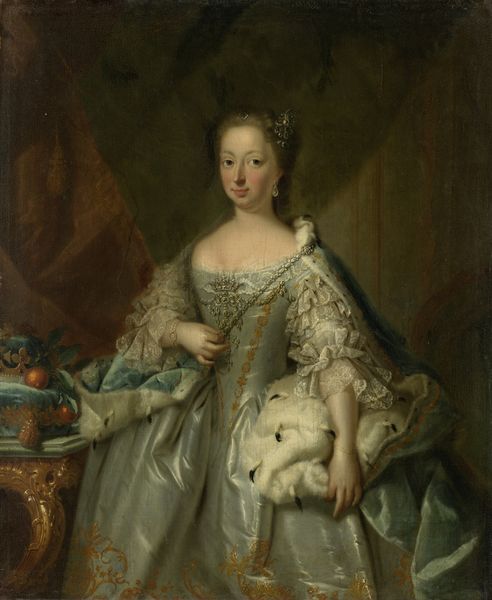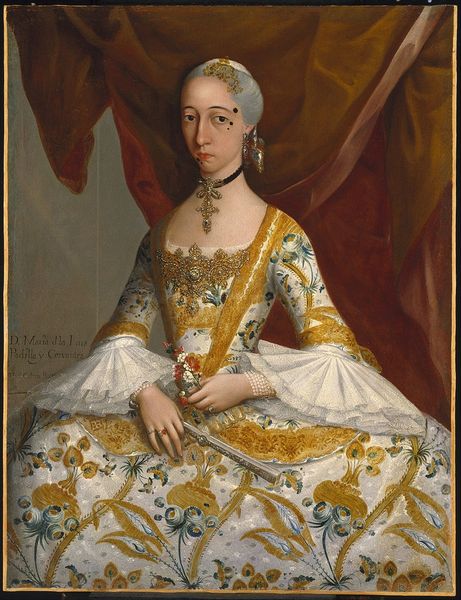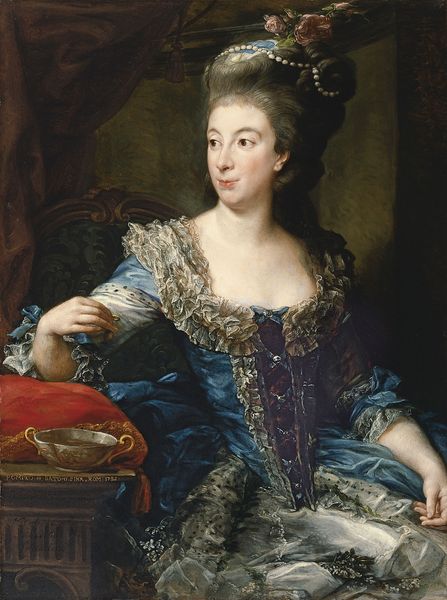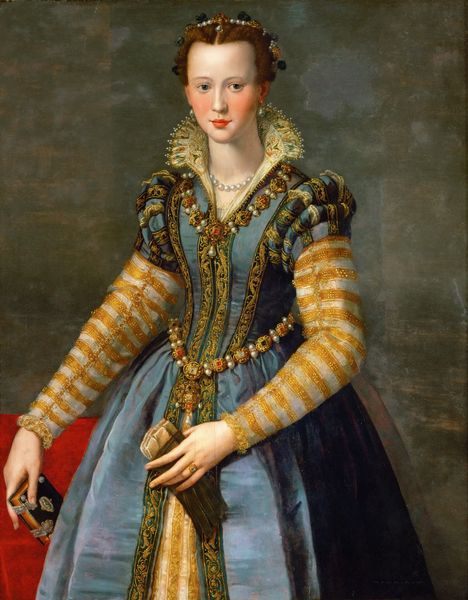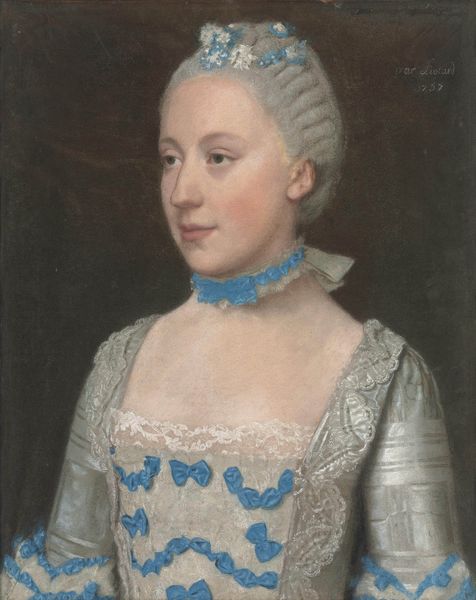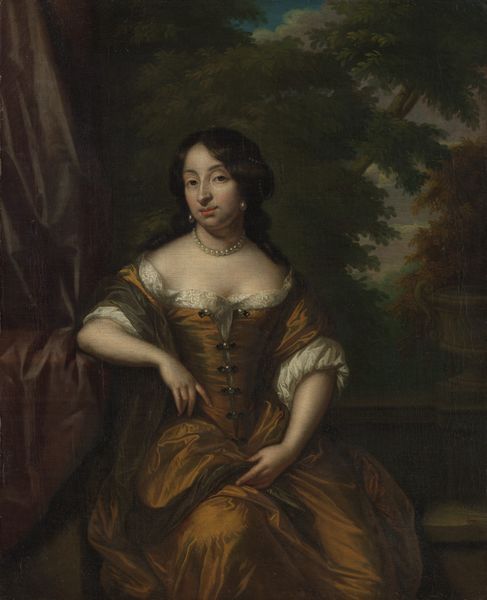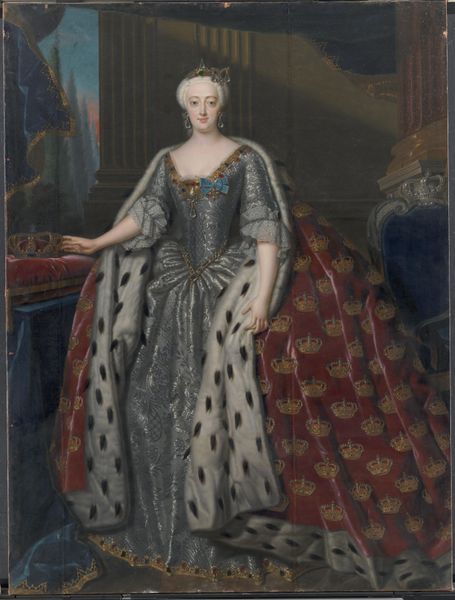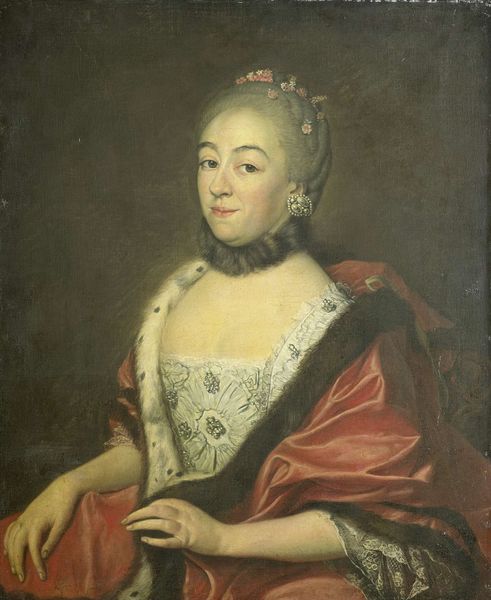
Frederikke Sofie Wilhelmine, Margravine of Bayreuth 1715 - 1779
0:00
0:00
painting, oil-paint, canvas
#
portrait
#
gouache
#
baroque
#
painting
#
oil-paint
#
canvas
#
underpainting
#
history-painting
#
rococo
Dimensions: 121 cm (height) x 102 cm (width) (Netto)
Curator: The subject of this painting, which seems to radiate both power and poise, is Frederikke Sofie Wilhelmine, Margravine of Bayreuth. Executed in oil paint on canvas sometime between 1715 and 1779, this portrait now resides here at the SMK, the National Gallery of Denmark. Editor: My first impression? She looks like she’s waiting for something… or someone. There’s a quiet anticipation in her eyes. The light is almost theatrical. Curator: Absolutely, there's a palpable sense of performance. As a history painting rendered as a portrait, it reminds us of the status that she holds. Notice the rich, pink gown with its ornate trimmings and button details—it seems like an underpainting technique has been implemented in its creation. The heavy furs imply luxury and warmth, suggesting both comfort and influence. How do you interpret her subtle accessories? Editor: The pink flowers nestled in her hair feel playful and sweet in comparison to the weight of her garments. I’m also curious about the dark foliage in her hand – such a stark, shadowy element… it's so deliberately placed, isn't it? As if to suggest complexity beneath the veneer of royalty. Curator: Precisely, and consider that Margravine Wilhelmine was herself a patron of the arts and intellectual life. We mustn't assume that she's a passive subject; the theatrical lighting we remarked upon could reference stagecraft. I see the details within the portrait as tools of self-construction rather than pure embellishment. The painter is almost an unseen narrator in this saga, don’t you think? Editor: Absolutely, there’s definitely a subtle dance going on between the subject and the painter, and perhaps even an appeal to future audiences, to us, centuries later. Perhaps that sprig represents growth in the midst of the perceived darkness around her. She really captivates you, makes you ask all sorts of questions. Curator: The Rococo flourishes capture something so vibrant and so human in an iconic representation of status and dignity. Editor: Indeed. Now, who was she *really*, do you think? An intellectual, or merely a symbol of privilege? Perhaps both. I suppose a great painting can do both.
Comments
No comments
Be the first to comment and join the conversation on the ultimate creative platform.

